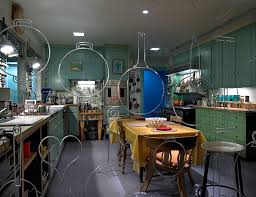By Professor Tiffany Banks On Tuesday, September 30th , students from my COMM 108: Foundations…
Professor Erika Bucciantini,
Adjunct Professor, Latin
photo credit: Erika Bucciantini
What does Latin have to do with American history? Latin is a language which did not originate on this continent nor this hemisphere. It is the official language of the Holy See in Italy, a language whose native speakers lived over a millennium ago in the ancient Mediterranean world. It is a language most often considered academic at best and at worst “dead.” It is a language few Americans are able to read fluently and fewer still are able to speak.
Why, then, are there so many classical symbols and so much Latin in our nation’s capital?
E pluribus Unum
This term, I asked my Latin 101 students to think about the Latin and classical symbols in American public spaces. We examined our money, discussed the American monument landscape, and, using statues and architecture as focal points, compared our historic and cultural touchstones with those of ancient Rome.
In the nineteenth and early twentieth century, America was desperate to be seen as a player on the world stage. As many European countries exhibited their wealth and power with white, marble architecture, symbolic edifices, monuments, and sculptures, our young nation was eager to do the same. Built in those times, many of our Capitol buildings, monuments, and the objects within them, emulate classical and Neo-classical style, archetypes, and themes.
Perhaps few are as iconic and striking as Horatio Greenough’s “George Washington” who presides over the second floor of the National Museum of American History.
Defense of liberty: our symbols
On an overcast October Sunday, I met my Latin 101 students outside the museum to see the sculpture we had viewed using the Smithsonian 3D Digitization Program and had been discussing all term. Notable for his “divine nakedness,” Greenough’s “George Washington” nods to the Greek sculptor Phidias’ lost Statue of Zeus at Olympia, a favorite inspiration for Roman-era sculptors for their own replicas and stylistic choices.
Greenough’s statue is seated on a throne sporting classically inspired scenes and flanked with miniature statues of Christopher Columbus and a Native American. Washington is draped in a Roman-style toga, and extends a sword to the viewer with his left hand. His right hand points emphatically to the sky, and his countenance appears calm yet determined. Each of Greenough’s choices exudes symbolic meaning.
The Latin inscription reads: Horatio Greenough made this statue as a great example of liberty nor without which will it last.
Rooted in the past, yet uniquely American
Students marveled at the sheer size of the twelve-ton statue, the poignancy of the symbols, and the overabundance of classical references. Since we had already completed the class for the fall term, students had already engaged with museum objects and architectural features as they researched, crafted, and presented their own Cultural Presentations. They were primed to view, analyze, and contextualize the objects we encountered together in the exhibition “American Democracy: A Great Leap of Faith.”
While touring the exhibition, students discussed the use of classical Greco-Roman imagery in this new, American arena and were quick to draw comparisons between the Roman Empire and American Expansionism. The sheer size and physical mass of the objects we viewed together put in stark relief the experience of viewing items online.
What received the most attention on our trip was the physical placement of the Greenough’s statue. It is situated just a stone’s throw away from the Star-Spangled Banner, the flag from Fort McHenry. In the video archives of the exhibit, there is an image of “George Washington” overlooking the flag receiving repairs and being stitched on linen backing in 1914 which means these two very different symbols of the defense of American liberty have been in close proximity for over a hundred years.
Liberty and justice for all
Most exciting to me about this trip was the ability to meet my students off campus and enjoy the museum as a class. As Latin 101 was HyFlex this term, some students I had never met in person before. Many students had not been to a Smithsonian museum since before the pandemic; some had never been before at all.
What I hope my students gained from our trip is that even a little knowledge of Latin can help us connect with the ideals advertised with our monuments. For, even as Latin is phased out of curricula, it still adorns public spaces and makes a statement of power in places of government and education in the American landscape. Understanding the symbolic meaning of the use of an ancient language as a demonstration and celebration of the nation’s nascence contextualizes the message of liberty and challenges us to extend it to all. Scientia potestas est.





This Post Has 0 Comments